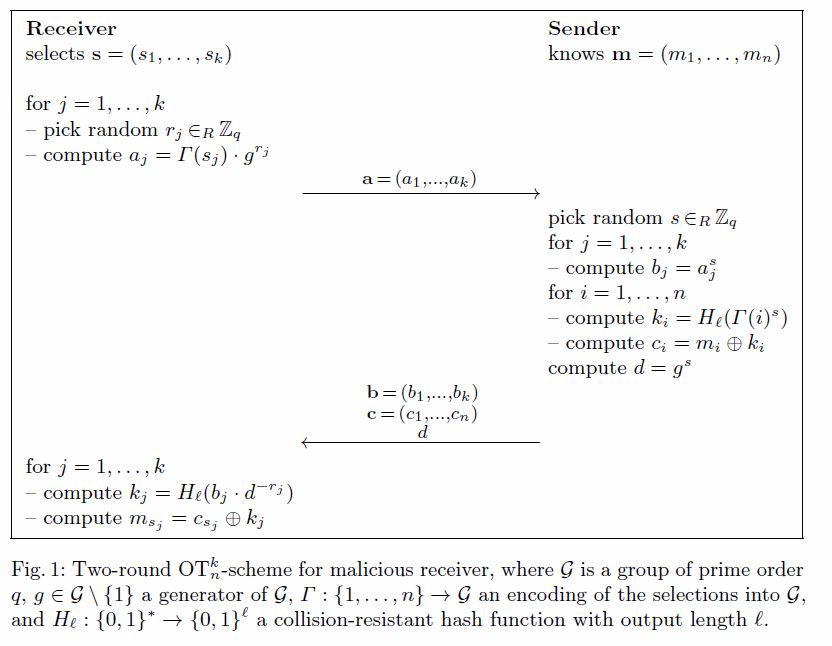I'm having the following protocol specification of a k-out-of-n oblivious transfer (as part of some E-Voting protocol) and it's bugging me that I fail to understand it with my basic knowledge of cryptography.
This particular implementation looks totally different from the usual 1-out-of-n "the receiver generates multiple public keys but only one is valid" examples I can find in the Internet.
Is this OT somehow based on the ElGamal encryption scheme? Especially the exponentiation within a prime order group remind me of it, but I don't see what the PK and SK are?
In order for it to be working, and according to the the final equation $m_{sj} = c_{sj} \oplus k_j$ I'm expecting to get $m_j$ from simplyfing $c_{sj} \oplus k_j$.
$m_j = k\oplus c\\ m_j = H(b\cdot g^{-sr}) \oplus c\\ m_j = H((\Gamma(s_j)\cdot g^{r})^s \cdot g^{-sr}) \oplus c\\ m_j = H(\Gamma(s_j)^s \cdot g^{sr} \cdot g^{-sr}) \oplus c\\ m_j = H(\Gamma(s_j)^s) \oplus c\\ m_j = H(\Gamma(s_j)^s) \oplus (m\oplus k)\\ m_j = H(\Gamma(s_j)^s) \oplus (m\oplus H(\Gamma(i)^s))$
So, $H(\Gamma(s_j)^s)$ must be equal to $H(\Gamma(i)^s)$
How can that be? How can some counter $i$ be equal to the senders query $s_j$? Is the selection $s$ basically the index of $m$ that he wants to receive.

